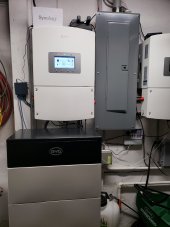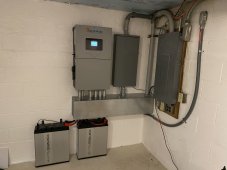@Solar Guppy
I just looked into this Solis inverter/battery solution. Why isn’t this talked about more here? The 10kw inverter is cheap. The batteries aren’t as they are not 48v but the price of a 10kw inverter, 12kwh BYD battery, certified auto transformer is not a ton more than a Solark 12k.
My belief is that the market that meets UL9540 standards is
generally limited to professional installers. They are the ones that choose what their businesses will sell and expect full support from the manufactures for not just the products, but training, access to engineering and such as they are the ones that deal with and product shortcomings and warranty support.
Enphase is a great example of how to succeed. I don't have experience with Tesla, but these two are the top options for energy storage for the expanding ESS market to residential ( not offgrid ) market.
This is why Schneider, SMA and a few others are still the primary go to for off-grid systems. It takes a very deep knowledge base to design and install these systems to building codes that frankly relatively few businesses have the talent on hand.
The Chinese have a we will build it and they will come mentality, and the are very insulted if one suggests why there market share is none existent or products do work as required. As can be see every day on forums like this, products are pumped out, not fully tested and vetted and the only metric that matters is the sale.
On the Solis 5G, it is a solid product, not perfect, but none are. BYD is the single best option on Batteries, they are #3 in the world in production and are set to take over, even from Tesla in the EV market and are the only vertically integrated manufacture, that literally make everything from raw materials to the finished product. The newer Battery Box HVL is very competitive and BYD will actually be around if you need service in the warranty period of 10 years.
I suspect for most in a DYI forum, they will just dismiss the "high" costs of these UL9540 listed systems, but IMHO, they don't know, what they don't know and it is a false "savings". Codes, support and warranties matter, long after the purchase has been completed.












